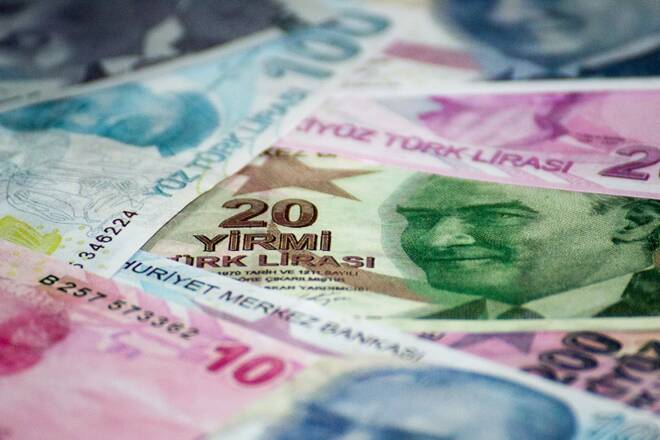Smoke continues to linger across market sentiment following the smoke grenade President Trump launched over the weekend with the threat of adding further tariffs on Chinese imports at the end of the week. The mixed performance of Asian markets coupled with little change to European shares as of writing highlights that investors are still clouded by smoke, and not sure how to position themselves given the new escalation. I stand on the side of the table that the risk of higher tariffs on Chinese imports, and a potential resolution are both under-priced.
Advertisement
Advertisement
Keep Watch on Lira and Rand While Questions Elsewhere Rest on Whether Investors have Under-Priced Trump’s Tariff Threat
By:
Smoke continues to linger across market sentiment following the smoke grenade President Trump launched over the weekend with the threat of adding further tariffs on Chinese imports at the end of the week.
Understandably however, investors cannot dodge the unpredictable bullets that are being shot from the gun of President Trump and I would suggest over the near-term to focus attention on the prospects of volatility in other asset classes, like the Turkish Lira and South African Rand.
The Rand behaved unusually quietly at the start of the week, particularly considering the spectacular sell-off in Asian markets. This is a rare occurrence for a currency that so often acts as the ultimate investor proxy for taking on risk in a portfolio. The lack of action in the Rand does suggest that investors are sitting on the side lines ahead of the elections. While the local currency remains exposed to election risks, external drivers in the form of US-China tensions will influence the currency’s valuation. If a resolution to the US-China trade tensions is agreed, this will be a welcome development for the Rand and many other emerging market currencies. However, Rand could find itself exposed to downside risks if tariffs on Chinese imports get raised higher on Friday.
When it comes to the Turkish Lira we cannot rule out the risk of expecting sustained selling momentum on the currency following the bizarre news that the Istanbul election will be re-run. This decision represents another severe swerve for investor confidence in Turkey, at a time where the Lira has already received a pounding from other political risks and central bank independence concerns.
Away from the view on Lira and Rand over coming days, lessons of the past do suggest the next move for wider global markets will be swayed by whether the threat from President Trump to increase tariffs on China were a negotiating tactic.
Given the constant back and forth over trade negotiations, investors are at risk of becoming complacent and increasingly numb to new developments.
Complacency can be understood, especially when considering how Donald Trump has made bold threats in the past only to soften the rhetoric at the last moment. However, there is investor fatigue from the trade tension theme and numbness resides from how long this situation has been prolonged.
I do feel that with global market sentiment remaining fragile and global growth fears still rampant in headlines, that Trump may be forced to think twice before moving ahead with any tariff hikes that escalate tensions further.
The endgame is to expect market risk sentiment to swing back and forth as investors digest the news flow over the final three days of trading for the week.
While a US-China breakthrough deal seems unlikely following Trump’s recent threat, it is still the base-case outcome investors are hoping for to buy stocks.
Reserve Bank of Australia stand pat
The Reserve Bank of Australia defied market expectations by keeping interest rates unchanged at 1.5% in May.
With inflation in Australia below the central bank’s 2-3% target, repeated weakness in household spending and domestic conditions shaky, it was widely expected that the central bank would cut rates to support growth. While today’s decision may temporarily prevent the Australian Dollar from weakening, the central bank could be seen acting in the future if domestic conditions remain depressed and external risks compound to the headwinds.
Disclaimer: The content in this article comprises personal opinions and should not be construed as containing personal and/or other investment advice and/or an offer of and/or solicitation for any transactions in financial instruments and/or a guarantee and/or prediction of future performance. ForexTime (FXTM), its affiliates, agents, directors, officers or employees do not guarantee the accuracy, validity, timeliness or completeness, of any information or data made available and assume no liability as to any loss arising from any investment based on the same.
About the Author
Lukman Otunugaauthor
Lukman Otunuga is a research analyst at FXTM. A keen follower of macroeconomic events, with a strong professional and academic background in finance, Lukman is well versed in the various factors affecting the currency and commodity markets.
Did you find this article useful?
Latest news and analysis
Advertisement
